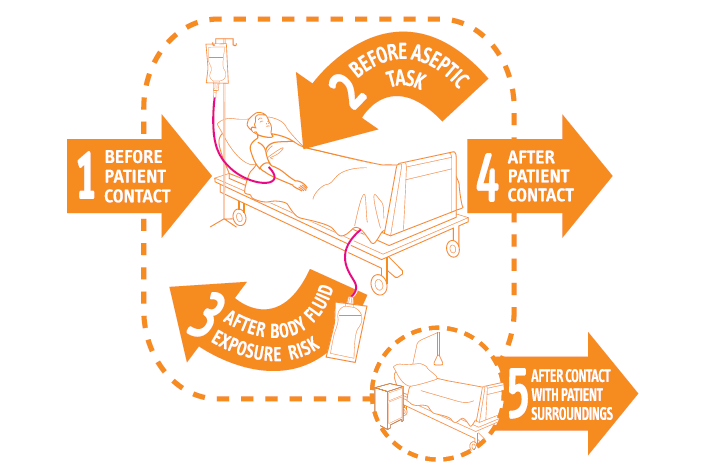A revolution in patient care
Today, there is undisputed evidence of the central role proper hand hygiene plays in healthcare, as it is regarded as one of the most important elements of infection control activities. However, just a few decades ago, the awareness of the importance of hand hygiene was not as widespread. According to infectious disease expert Professor Didier Pittet, dubbed the Father of Modern Hand Hygiene, the development in the last centuries can be described as no less than a true revolution.
Finding hand hygiene routines that reduce the rates of healthcare-associated infections has been a key motivator for Professor Pittet, who has long had a central role in the WHO’s work on guidelines for hand hygiene in healthcare. Although, the guidelines themselves are not enough to change behaviors. It is equally important to develop a strategy that takes several different perspectives into account when implementing the guidelines.

During his long experience working with hand hygiene, Professor Didier Pittet has come to realize that many elements need to be in place in order for a successful change to happen. The WHO strategy consists of five elements:
- a system change that makes hand hygiene more convenient with alcohol-based hand rub available at every point of care,
- education for health workers,
- continuous monitoring and performance feedback,
- reminders in the workplace, and
- establishing an organizational culture focused on safety.
– You need all five elements to succeed, because they enhance each other. If you remove one dimension, you will not achieve the same results.
Professor Didier Pittet compares the implementation of hand hygiene guidelines to the introduction of seat belts in the mid-twentieth century. Just like hand hygiene, the benefits of seat belts were obvious, but it still took a long time to change the public’s behavior.
– Resistance to change is a universal human tendency, not just in healthcare. That is why reinforcement and feedback are so important. People feel empowered when they see results, which furthers positive reinforcement.
While there has been great progress around hand hygiene practices, Professor Pittet believes there is still room for improvement in better methods.
– We need to improve the education about the five moments, and be more innovative in promoting hand hygiene strategies to continuously remind people to follow the guidelines. There is also a lot of improvement to be done when it comes to the way we monitor compliance and give feedback. This is where technology plays an important role.
Thanks to better hand hygiene routines, we have probably saved five to eight million lives around the world each year.
Overall, he looks positively on the matter of hand hygiene – both when looking back at what has been achieved and for future development.
– Since we started our work, we have seen a revolution in patient care. Thanks to better hand hygiene routines, we have probably saved five to eight million lives around the world each year. Today, most physicians see good hand hygiene practices as a natural aspect to their work routines. Hand hygiene has now been introduced in the student curriculum, which indicates a new generation of better informed and well-prepared physicians – hopefully leading to a new revolution in hand hygiene practices.

Illustration taken from WHO Guidelines on Hand Hygiene in Health Care
5 moments of hand hygiene
For effective hand hygiene, healthcare professionals should disinfect or wash their hands at five critical moments during patient care.
- Examples: Before shaking hands, helping a patient to move around, clinical examination.
- Examples: Before oral/dental care, secretion aspiration, wound dressing, catheter insertion, preparation of food, medications.
- Examples: After oral/dental care, secretion aspiration, drawing and manipulating blood, clearing up urine, faeces, handling waste.
- Examples: After shaking hands, helping a patient to move around, clinical examination.
- Examples: After changing bed linen, perfusion speed adjustment.